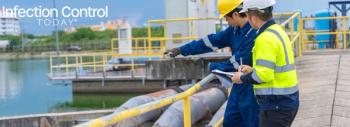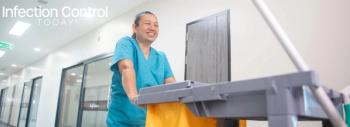
Researchers Calculate the Economic Cost of Antimicrobial Resistance Per Antibiotic Consumed
Antimicrobial resistance (AMR) poses a colossal threat to global health and incurs high economic costs to society. Economic evaluations of antimicrobials and interventions such as diagnostics and vaccines that affect their consumption rarely include the costs of AMR, resulting in sub-optimal policy recommendations.
The model is comprised of three components: correlation coefficients between human antibiotic consumption and subsequent resistance; the economic costs of AMR for five key pathogens; and consumption data for antibiotic classes driving resistance in these organisms. These were used to calculate the economic cost of AMR per antibiotic consumed for different drug classes, using data from Thailand and the United States (US) to represent low/middle and high-income countries.
The correlation coefficients between consumption of antibiotics that drive resistance in S. aureus, E. coli, K. pneumoniae, A. baumanii, and P. aeruginosa and resistance rates were 0.37, 0.27, 0.35, 0.45, and 0.52, respectively. The total economic cost of AMR due to resistance in these five pathogens was $0.5 billion and $2.9 billion in Thailand and the U.S., respectively. The cost of AMR associated with the consumption of one standard unit (SU) of antibiotics ranged from $0.1 for macrolides to $0.7 for quinolones, cephalosporins and broad-spectrum penicillins in the Thai context. In the U.S. context, the cost of AMR per SU of antibiotic consumed ranged from $0.1 for carbapenems to $0.6 for quinolones, cephalosporins and broad-spectrum penicillins.
The researchers say the economic costs of AMR per antibiotic consumed were considerable, often exceeding their purchase cost. Differences between Thailand and the U.S. were apparent, corresponding with variation in the overall burden of AMR and relative prevalence of different pathogens. Notwithstanding their limitations, use of these estimates in economic evaluations can make better-informed policy recommendations regarding interventions that affect antimicrobial consumption and those aimed specifically at reducing the burden of AMR.
Reference: Shrestha P, Cooper BS, et al. Enumerating the economic cost of antimicrobial resistance per antibiotic consumed to inform the evaluation of interventions affecting their use. Antimicrobial Resistance & Infection Control. 2018;7:98
Newsletter
Stay prepared and protected with Infection Control Today's newsletter, delivering essential updates, best practices, and expert insights for infection preventionists.






